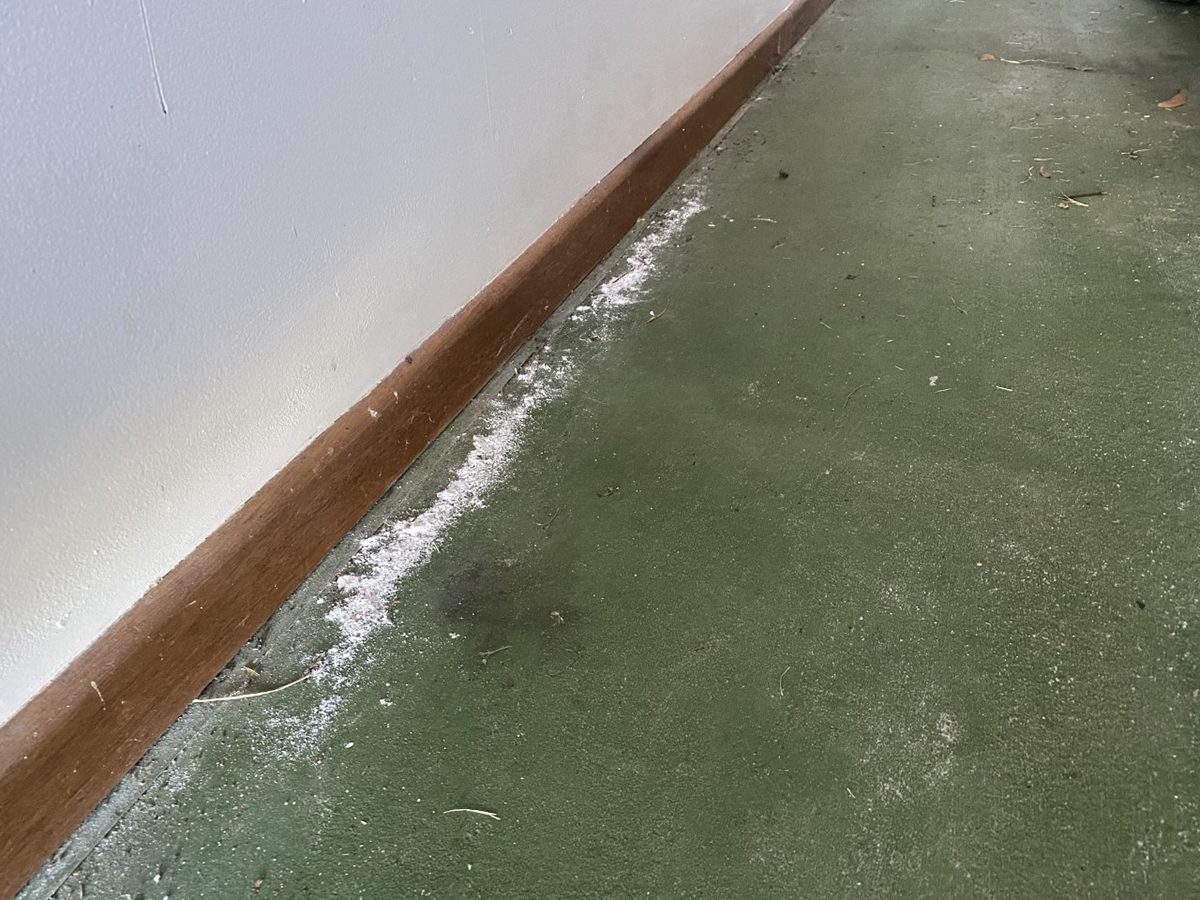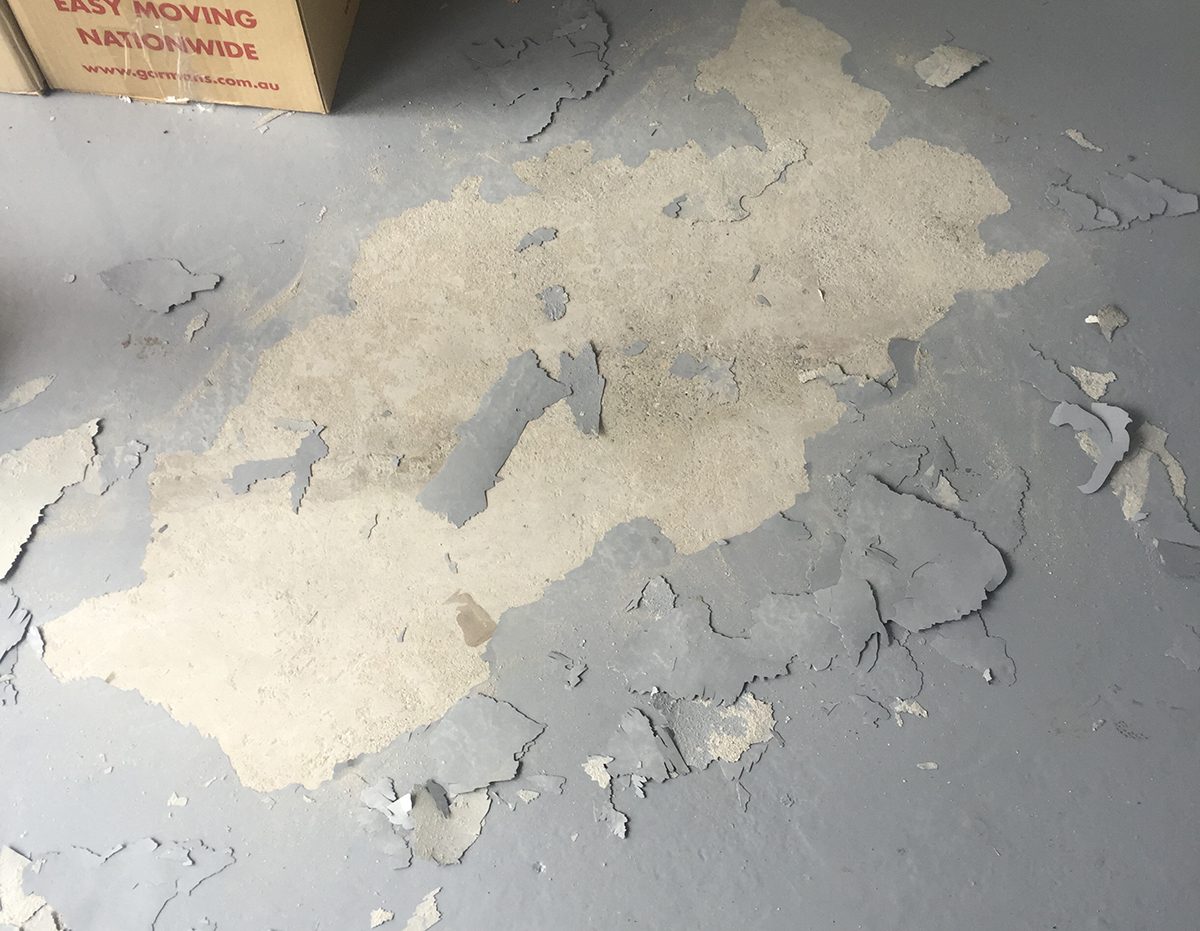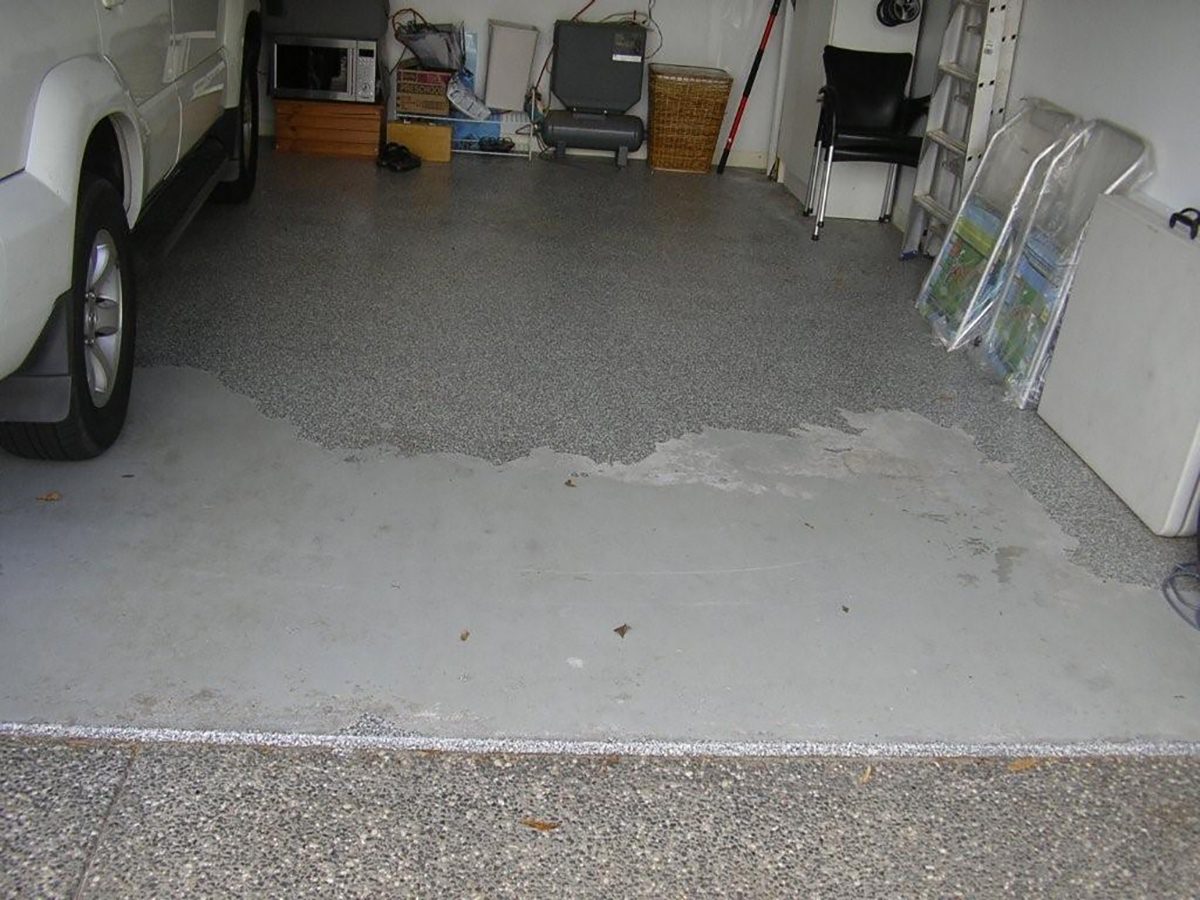Home › 9 questions for going over epoxy flooring
Picture this scenario – there’s a job with what looks like epoxy flooring already down, and the owner would like to over-coat with new epoxy flooring because they want to get things done as quickly as possible. What do you do? Should you apply the new epoxy flooring over the top, or remove the existing floor to get back to concrete first?
There is no right or wrong answer to the question, just risks you need to weigh up in deciding what the best course of action is.
Here are some of the questions that run through my head in this scenario:
Can you confirm the old floor is a two-pack epoxy flooring? If you put a little bit of solvent on it, does it bubble or wrinkle straight away? If it does it’s probably floor paint of some description, which means you shouldn’t over-coat with epoxy flooring as floor paints are typically much weaker and you probably won’t get the same level of performance you’d normally get from high-quality, two-pack epoxy flooring.
If it’s flaky, remove it. No matter how good the new epoxy flooring is, if you apply over the top of a weak film then it’s very likely the performance is going to be severely compromised.
Have liquids been spilt onto the floor and stained the film? Contamination in this manner is not a good sign and if the stain has an oily appearance, then I would definitely look to remove the old floor first. Applying over the top of contaminated films significantly increases the risk of visual defects (e.g. crawling) and premature failure (usually through adhesion issues that lead to delamination).
This is one of those 50/50 scenarios where some will err on the side of caution and remove it, while others will over-coat. The fact that the existing floor is badly worn suggests service conditions may be quite challenging, in which case I’d probably favour starting again and getting back to clean concrete.
If you're dealing with an industrial flooring project or anything that's particularly challenging from an application or service perspective, I’d want to give the new epoxy flooring the best chance of performing by bonding directly to concrete.
If possible, do a small test to see if the coating flows nicely or develops some form of film defect/s. The most common rejection issues to watch out for here is crawling and fisheyes.
Just like the rejection test above, apply the coating as intended, allow it to cure, and then do some tensile adhesion tests to see if it sticks. This can be done to test adhesion in all ways, i.e. of the new epoxy flooring direct to concrete, or the new epoxy flooring over the top of the old epoxy flooring.
Some floor coatings “ball up” rather than grind off easily and this is an absolute nightmare where preparation is concerned. This question may override all other considerations because a floor that can’t be easily removed may leave you with no choice but to go over the top.
Another practical consideration is whether or not you have a sufficient shutdown period to remove the existing coating anyway. Tight shutdowns across large areas may mean complete removal of existing coatings can only be done in certain critical areas.
As a final comment, if you do choose to over-coat then be sure to educate the client on what you’re doing and any risks that may be
involved. Be open and honest so they can make the call rather than it resting all on your shoulders.



This information has been adapted from our epoxy handbook - “Finally, real answers for real contractors – Industrial Flooring”.
Copies are available on the Support page.
Real World Epoxies has formulated, manufactured and supplied high-quality epoxy flooring systems and products for more than two decades. We stand behind our products because we only use proven, high-quality materials that we know will perform as expected. You can trust our epoxy supplies for your epoxy flooring project.
Let us help you with your epoxy flooring needs when you fill out one of our contact forms or call us on 1300 EPOXIES (1300 376 943).
To help build a strong resin flooring industry that sits alongside timber, carpet, tiles and vinyl as a mainstream flooring option.
To eliminate preventable failures
that hurt the resin flooring industry
and prevent it from reaching its full potential.

